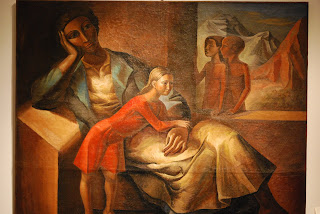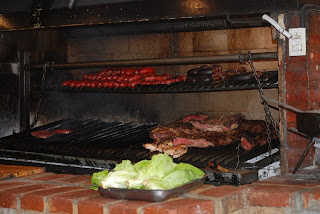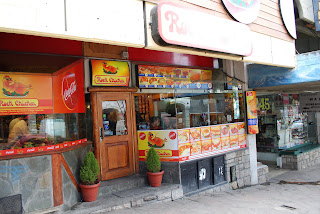


As I am waiting for Dianne, I thought I would share some additional pictures from Córdoba (I know that seems a long time ago that I was in that city, but it was only 4 weeks.) The pictures above and in the Kodak Gallery Album link below, were taken during my tour of the Historic Museum National University of Córdoba, also known as "The Jesuit Block." This block was the center of Jesuit activity, not just in Córdoba, but really all of Argentina, beginning in 1599. At that time Córdoba was still a small town and it was the Jesuits who put it on the map. In Córdoba the Jesuits built the "Colegio Máximo" which became the National University of Córdoba, and the Colegio Nacional de Montserrat. In the surrounding regions they built "Estancias," a system of ranches to provide the support they needed for their religious and educational work.
Their work was interrupted in 1767 when they were expelled from Spain by King Carlos III, and as a result, expelled from the Spanish colonies as well. The King was bothered by their growing wealth and power. As a result, the university and the college became Federal State institutions and remain so to this day. However, much of the original buildings are still in use and a large portion of the original Jesuit Library collection is still intact, with books dating to 1515 included in the collection. This lead the United Nations to declare the colonial buildings of the Jesuit Block a World Heritage site in the year 2000. The University is the oldest university in Argentina and the fourth oldest in America. It is still considered one of the most prestigious academic institutions of Latin America.
We were not allowed to take pictures inside the Museum, where I saw the rare books collection and the Hall of Graduation, with the description of the examination process for doctoral candidates. (It was quite grueling. Went on for three full days, conducted totally in Latin, with the candidate being grilled by ALL the current doctors on the faculty.) But I was able to take pictures of the descriptive plaques which will provide you with more details on the history if you are interested. All these pictures you may find in this Kodak Gallery Album link: http://www.kodakgallery.com/I.jsp?c=6d2p4u6.ci7nk862&x=0&y=-waporw&localeid=en_US
I am including a second link to another Kodak Gallery Album which contains pictures of the Jesuit Crypt, built in the early 1700s to be a crypt and crematorium. Archaeologists do not believe it was ever used, though, as the Jesuits were evicted in 1767. The structure was buried around 1829 and forgotten until Telecom was laying underground telephone cable in 1989 and discovered it. As a result the city restored it. The link is: http://www.kodakgallery.com/I.jsp?c=6d2p4u6.76ymobu2&x=0&y=rdw377&localeid=en_US














































